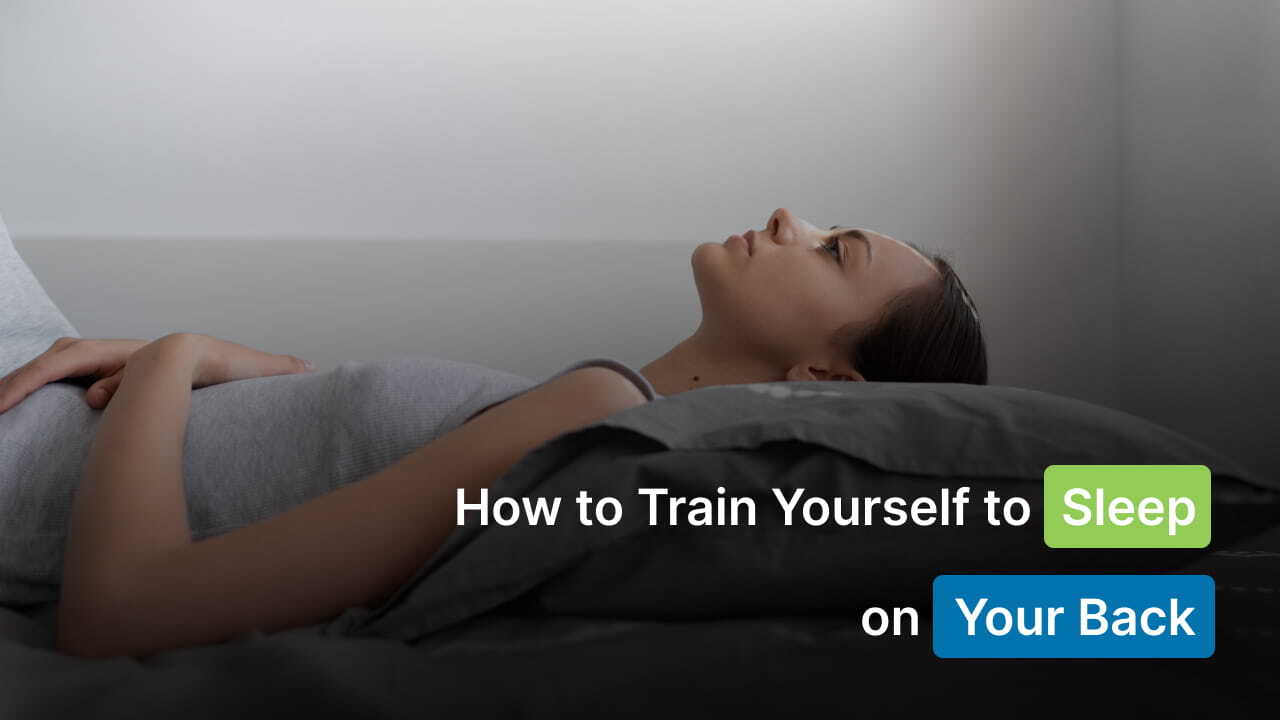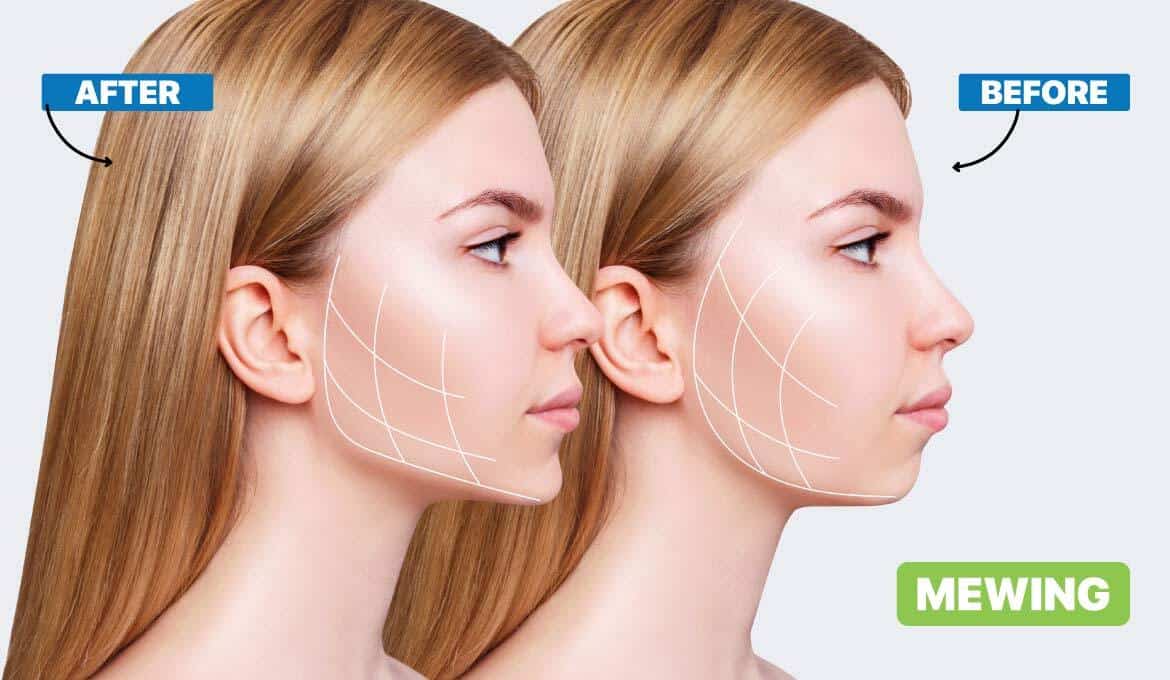
A better quality of sleep is a necessity for everyone. While sleeping, we all need a comfortable and supportive sleeping position. Sleeping on your back is considered one of the best positions because it offers many health benefits, but only 10% of people sleep on their back because most people find it difficult to sleep when facing up.
Back sleeping not only maintains and supports your spinal position but also offers many benefits, such as reducing the chances of snoring and sleep apnea symptoms. So, if you are trying to sleep on your back but finding it difficult, this article is for you. Here, you will find some tips on how to train yourself to sleep on your back, the benefits of sleeping with this position, and more so you can get a deep and restful sleep. Continue reading and start practicing!
Benefits of Sleeping on Your Back
There is an array of benefits of sleeping on your back that you will be surprised to know. Let's explore several perks of why you should sleep on your back.
1. Relaxing Neck or Back Pain
Sleeping on your back allows your head, spine, and neck to stay aligned, thus relaxing and easing your neck pain. Even your weight is equally distributed, reducing pressure, meaning you wake up with less back or neck pain.
2. Relieves Sinus Naturally
If you are already struggling with a sinus issue, sleeping at your back will help you drain the fluid that builds up from your nose and head, relieving congestion and waking you with less stress.
3. Reduces the Frequency of Headaches
Headaches are the leading cause of cervicogenic disorders or poor neck alignment. Sleeping on your back allows you to distribute weight, which causes your body pain, thus relaxing your head and reducing headaches.
4. Prevents Wrinkles
According to studies, sleeping in side positions can compress your skin and make prominent facial wrinkles. So, sleeping on your back to avoid the skin compression on pillows helps prevent friction and visible signs of aging, such as wrinkles.
5. Reduce Chronic Pain and Inflammation
Another benefit is that it helps to reduce chronic pain and inflammation caused by arthritis and other inflammatory conditions by decreasing pressure and compression on the spinal cord and also on the hip, joints, and shoulders, preventing frozen shoulder problems.
6. Helps Reduce Acid Reflux Symptoms
People with acid reflux must try to sleep on their backs. This position helps drain fluid if you sleep with your head above your stomach, which also prevents your cheeks from puffiness when you wake up and reduces acid reflux symptoms while you sleep.
How To Train Yourself To Sleep On Your Back?
Well, everyone wants to sleep comfortably, but knowing the amazing benefits of sleeping on your back, most of you would like to sleep on your back. So, here are some practical tips on how to train yourself to sleep on your back. Let's explore!
Tip 1: Use Pillows Under Your Knees.
The first tip is to try a pillow underneath your head and place it under your slightly bent knees. Make sure your spine and neck feel comfortable so that the position can help you relieve pain and reduce pressure while maintaining the correct alignment of your spine and neck.
Tip 2: Consider A Supportive Mattress.
To start with, how do you train yourself to sleep on your back? First, consider getting a supportive mattress. Without the right mattress, you will find it easier to sleep on your back, and even your back will be more comfortable if you sleep on a slagging mattress. So, be sure to buy a firmer mattress that properly supports your lower back and hips, and you will wake up with loads of relaxed feelings.
Tip 3: Surround Yourself With Pillows.
If you are a roller sleeper, it means while sleeping, you roll the left or right or roll to your stomach, then stop switching positions and maintain your back sleeping position along with the alignment of your spine and neck and keep your shoulders comfortably elevated. Place pillows around your hips and midsection. Just place some pillows around your body to switch your back sleeping position.
Tip 4: Consider A Weighted Blanket.
Have you ever tried sleeping on your back in a weighted blanket? If not, try this trick. Weighted blanket not only gives you a comfortable feel, but its heavy weight allows you to sleep in a single position and hold your body, preventing your rollover on your bed while you are sleeping on your back with its stimulated gentle pressure. This type of blanket also offers other benefits like minimizing insomnia, allowing you to breathe slower and deeper, triggering serotonin production, easing anxiety, and getting more restful and relaxed sleep.
Tip 5: Elevate Your Head.
The next tip is to sleep with your head lifted higher than usual. You can follow this technique using a higher and firmer pillow that opens up your army or adjusts the bed frame so your neck is comfortable and supports proper alignment. Keeping your head elevated makes you uncomfortable if you try to sleep on your stomach and are left to only sleep in the back position. It also helps you to avoid snoring while sleeping.
Tip 6: Try Starfish Position.
If you still find it challenging to sleep on your back, try a type of back sleeping position- The Starfish Position. Yes! You can lay on your bed like a five-legged fish while on your back. You can spread your arms and legs apart all over your mattress and feel relaxed. This position allows your limbs to become away from the center of your body, making it hard to roll onto other sleeping positions.
Tip 7: The Soldier Position.
Another type of back sleeping position is the Soldier Position. You can also sleep in this position if you find it challenging to sleep on your back. You can relax your arms by placing them on the downsides in this position, just like savasana yoga. This posture helps your body to relax deeply.
Tip 8: Avoid Eating Meal Before Bed.
The next tip is to avoid eating your meal before sleeping. Eating before bed has many impacts, such as heartburn and weight gain. Not only this, but you will also experience worse sleep. So, avoiding meals, alcohol, or caffeine before bed prevents these adverse effects, which can lead to painful acid reflux. To minimize the chance of acid reflux, eat two hours before sleep time, which allows you to sleep comfortably in your back position.
Tip 9: Try Breathing Techniques.
Another way to get good quality sleep is to try some breathing techniques. If you are lying on your back and find it difficult to fall asleep, try breathing techniques like bust stress. Such techniques will surely help to relax your mind. As you take a deep breath, you inhale oxygen, your heart rate slows, and your mind muscles relax, so you can fall asleep while on your back.
Tip 10: Stretching Exercises Before Bed.
If you find it difficult to sleep on your back, another tip is to try some stretching exercises before bed. Twenty minutes of stretching before bed gives you restful sleep. These movements release your tension and help your mind relax. Make this your healthy routine and do some yoga and mild stretches that promote sleep, such as bear hugs, neck stretches, etc., to improve your blood circulation. Then, try to sleep on your back.
So, this was all about how to train yourself to sleep on your back. You can use these tips and tricks to sleep on your back. Now, let's look forward to some other facts about the back sleeping position.
Who Shouldn't Sleep on Their Back?
Although back sleeping offers many health benefits, the thing to note is that it is not the best position for everyone to sleep. In some instances, it is advisable to better switch your back sleeping position to another to avoid the risk of complications. People with certain health conditions should back sleeping:
- Pregnancy: Pregnant women are not advised to sleep on their backs. According to research, sleeping can decrease blood circulation and reduce blood flow to the fetus. Instead, sleeping on the left side is advisable so the fetus gets proper oxygen and blood, reducing the risk of low birth weight. To support the side sleeping position, pregnant women can use pregnancy pillows.
- Obstructive Sleep Apnea: People with OSA should not sleep on their backs. This can prove to be the worst position for them because back sleeping can block their airway passage. Gravity can cause the tongue to fall back in the mouth, making it difficult to breathe, thus worsening the symptoms of OSA. Instead, sleep in side positions and avoid pillows to rest your head on a flat surface for better air movement.
- Chronic Snoring: Sleeping in the back position can not be a good position for a chronic snorer because sleeping on your back makes your throat and its parts relaxed. The tongue and soft palate collapse at the back of your throat, blocking the airway passage and creating a vibrating sound. So, to avoid snoring, try changing your sleep position to the left or right side.
- Heartburn: If you have the problem of heartburn, then sleeping on your back may worsen your condition, and you will not be able to sleep restfully. After the meal, your stomach produces acid to digest your food, which can sometimes escape from you and even into your lungs, throat, and sinuses, causing heartburn. So, as mentioned above, to avoid acid reflux, avoid bedtime meals and fatty, spicy, and acidic foods that cause heartburn. Sleeping on your left side will be best if you have a regular heartburn issue, as it limits the amount of acid exposed to the esophagus.
Other Tips For Good Sleep
Sleeping position is not the only thing necessary to have a restful and relaxed sleep. According to the American Academy of Sleep Medicine, you need to follow some of the following tips to develop good sleep hygiene:
- Avoid heavy meals before bedtime.
- Avoid alcohol and caffeine intake before sleeping.
- Make a consistent pattern of sleeping and waking up daily at the same time.
- Drink herbal tea before bedtime.
- Sleep at least 7-8 hours daily.
- Make a habit of taking a warm bath before bedtime.
- Make your bedroom quiet, dark, and relaxing.
- Cut off the time for using screens before bed. .
Conclusion
When it comes to relaxed sleeping, we want to sleep comfortably. But from the article above, we learned many benefits of sleeping on your back. So, why not try it? Changing your preferred sleeping position can be uncomfortable and require some adjustments. But all you need to do is follow our tips on how to train yourself to sleep on your back. Soon, you will make it your regular habit and start to sleep restfully.
However, people with health conditions like pregnancy, sleep apnea, and heartburn should avoid back sleeping. But if you are not among one such person, this position will be the best for your overall health. So, remember to be patient and keep practicing!
FAQs
1. What is the healthiest sleeping position?
Ans: Sleeping on the left or your back is considered the healthiest, as these positions can support and balance your spine and neck and help reduce pressure on the muscles.
2. What are the bad sleeping positions?
Ans: Bad sleeping positions include sleeping half up and half down or resting your head on your upper arm. These positions can cause muscle, nerve, or bone injuries.
3. Is it better to sleep with no pillow?
Ans: Sleeping without a pillow has benefits, such as lessening neck and back pain. It also encourages better spinal alignment.
4. What sleeping position is best for the heart?
Ans: Try sleeping on the left or right side to protect the heart. Prefer the right side if one has congestive heart failure and other heart issues to avoid breathing discomforts.
Also Read










































